Estimated reading time: 14 minutes
From Radish Greens to Watermelon Rind Pickles, There’s More in Your Garden Than Meets the Eye.
Most people throw out parts of vegetables that are not only good to eat but often have higher nutritional value than the other parts. For example, turnip greens pack more nutrients than the turnip itself, including calcium, manganese, folate, and vitamins A, C, and K. And cauliflower leaves, not the cauliflower, are one of the richest sources of calcium in vegetables.
Want to save this post for later? Click Here to Pin It On Pinterest!
How Could That Be?
This disparity is because many parts of a plant like the roots, stems, and leaves concentrate the compounds and nutrients of the plant while imparting them to the final fruit. All vegetables are good to eat, but many parts of those vegetable plants may be even better.
Stem to Root Harvesting
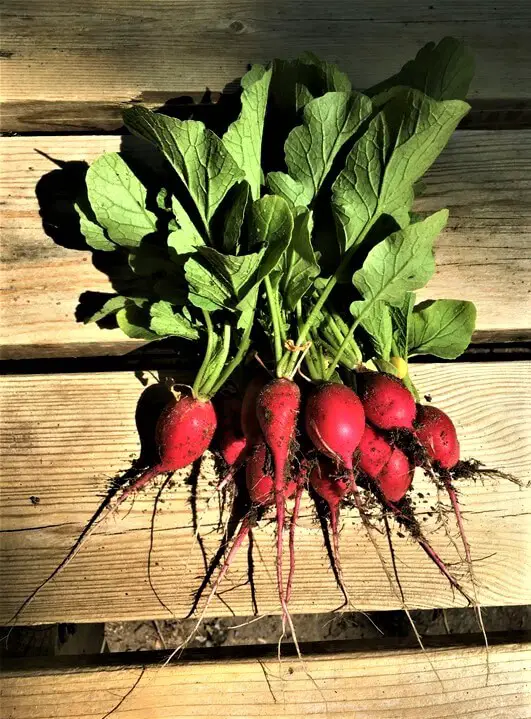
Eating all parts of a plant is a common practice in Asia and Africa, and it’s called harvesting “stem to root.” That’s not the case in many parts of the U.S. and Europe where the commercial appearance and profitability of produce drives decisions with regards to what is harvested and marketed.
As a result, we simply don’t know what we’re missing. Worse, we’re wasting food resources, especially if we have a small garden space and want to get the most out of what we plant.
Think Outside the Produce Box
Those parts of a plant that are edible but often ignored are sometimes referred to as “secondary edibles”. Some you may have heard of or even tried foods like turnip greens and stuffed zucchini flowers. But in many parts of the world, confronted by food shortages and even famine, nothing is wasted from both plants and animals.
Much of our behaviors are conditioned by what and how we see things at a grocery store. The produce is neatly arranged, trimmed, and displayed a certain way and we just assume that’s how fruits and vegetables should be.
What we don’t know is what we don’t see, but our garden shows it to us every day.
- Radishes are often sold with the leafy tops still attached, but how often do we cut off and discard the tops and only eat the radish root?
- Beets and turnips are often sold the same way, and both turnip greens and beet greens have micronutrients and minerals equal to the root part, along with nutritional components like vitamin K, which the roots lack.
- You rarely see zucchini flowers in a grocery store, but in many parts of Asia, they are stuffed and baked as a delicacy while most rot in our gardens.
- And how often do we cut and toss the outer leaves of a head of cabbage or cauliflower without giving a second thought to those very nutritional outer leaves?
Rediscover What You’re Missing
We’re going to explore some of these lost garden treasures and talk about the hidden nutrition. We'll also look at some recipe tips to make all of those secondary edibles into a veritable “stem to root” feast.
Greens
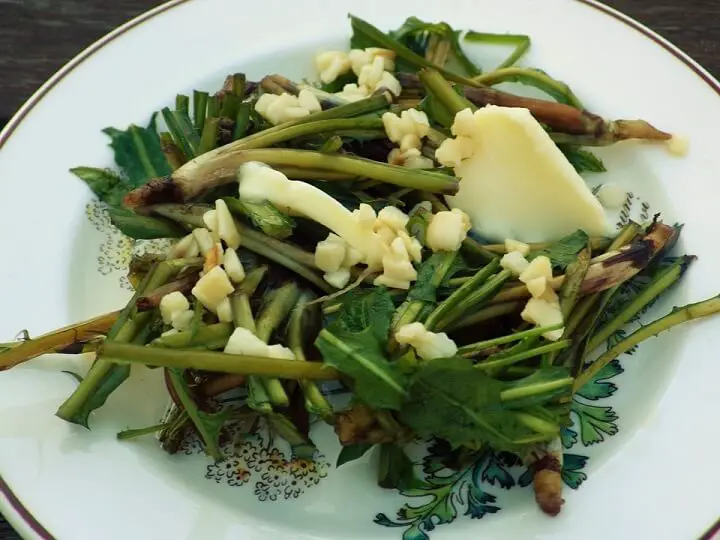
All plants have leaves, but with the exception of certain leafy vegetables like lettuce, spinach, and kale, we tend to think of the leaves of root vegetables, vine plants, and others as garden scrap for the compost heap.
Here’s the opening list for greens you can eat. But first, here are some general tips on how to prepare greens from garden vegetables:
- Make sure you rinse, and rinse, and rinse the leaves, especially if they were grown in sandy soil.
- The leaves or greens of most plants should be boiled in salted water (amount of salt is up to you). Boil for 1 minute up to an hour. Delicate leaves like carrot tops and pea leaves need a shorter time or none at all. Coarser leaves like turnip, radish, and beet leaves take longer. Taste as you go.
- You also have the option to only boil the greens for a minute and then shock them in ice water to set a bright green color. This is particularly true if you also do the next step.
- You have the option to drain the cooked leaves and sauté them in butter or olive oil with garlic or any other flavoring or herb that you like. Traditional recipes call for tossing the greens in bacon fat, but olive oil is also a tasty option. If you sauté, you can reduce the boiling time. Some people skip the boiling step and just sauté the raw leaves. That’s up to you, so experiment as you go.
- Salt and pepper to taste and serve as a side dish.
- You can also add your greens to a soup or chopped fresh for a salad. Carrot tops are particularly good. Try a raw leaf of any green first to see if it’s too bitter for your taste in a salad. If that’s the case, boil it to reduce the bitterness.
1. Turnip Greens
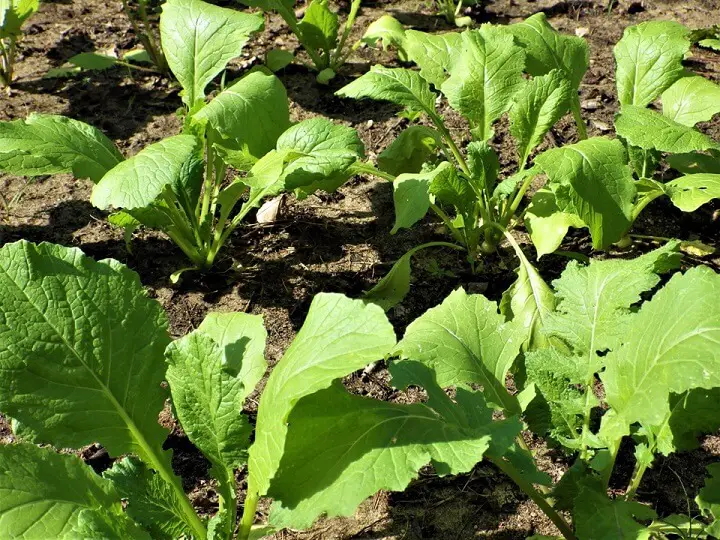
Turnip greens have more nutrients than the turnip itself, including calcium, manganese, folate, and vitamins A, C, and K. They have a strong and spicy flavor and are often enjoyed both cooked and raw.
Turnip greens have been shown to decrease your risk of health conditions, such as heart disease, cancer, and inflammation. Turnip greens also contain several antioxidants including gluconasturtiin, glucotropaeolin, quercetin, myricetin, and beta-carotene all of which play a role in reducing stress in your body.
2. Radish Greens
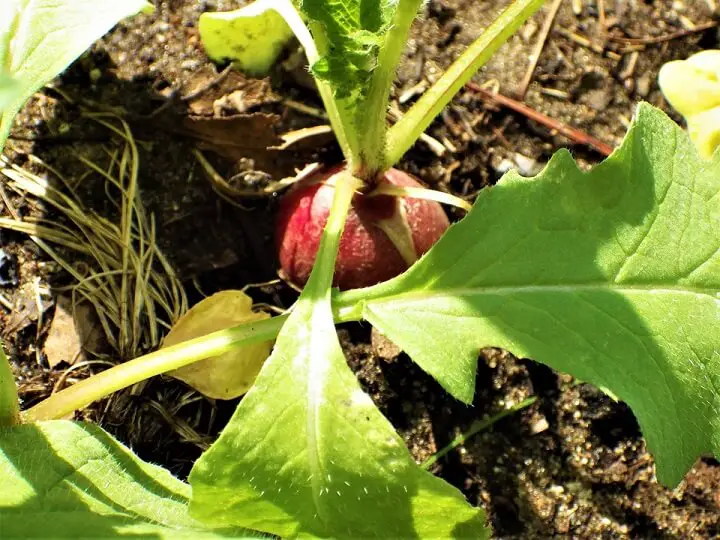
While many people have heard of cooked turnip greens, few are aware that radish greens may be even better from a nutritional standpoint. Radish greens are rich in vitamin C, vitamin B6, magnesium, phosphorus, iron, calcium, and vitamin A, aid in skincare, lower cholesterol levels, and regulate digestion.
A number of studies have found that radish greens have an impressive antioxidant capacity to fight against oxidative stress and chronic diseases. There are also some unique antioxidants in radish greens such as sulforaphane indoles, as well as potassium and folic acid. There is also dietary fiber and protein in these greens.
Certain compounds present in the leaves of radishes are believed to have anti-inflammatory and pain-relieving effects, which may help in cutting the risk of inflammatory conditions of the joints, such as gout and arthritis.
Some studies have shown the anti-hypertensive effects of radish tops. Its high potassium content has positive effects on the sodium-potassium balance, to help control blood pressure. As a result, its consumption may also be beneficial for cardiac ailments such as arrhythmia.
Being a good source of iron, vitamin A, vitamin C, phosphorus, and thiamine, radish greens help in minimizing fatigue and balancing the hemoglobin levels, managing iron-deficiency anemia as well. If you like turnip greens, maybe it’s time to add radish greens to your diet.
3. Beet Greens
The leaves of beets are rich in potassium, calcium, riboflavin, fiber, and vitamins A and K. One cup of cooked beet greens contains 220% of the daily recommended intake for vitamin A, 37% for potassium and 17% for fiber.
They also contain the antioxidants beta-carotene and lutein, which may reduce the risk of eye disorders, such as macular degeneration and cataracts.
4. Carrot Greens
Carrot greens contain an impressive list of nutrients, including significant amounts of vitamin A, dietary fiber, vitamin C, calcium, and iron. They also contain vitamin K and various phenolic compounds and carotenoids, along with trace amounts of other antioxidants.
Health benefits of carrot tops include enhanced immunity, bone density, eye health, circulation, kidney function, blood pressure, and digestion, among others.
Carrot greens are also high in antioxidants, like lutein, zeaxanthin, and beta-carotene. These compounds can help protect your retina from oxidative stress, while also lowering your risk of macular degeneration and cataracts.
5. Pea Leaves
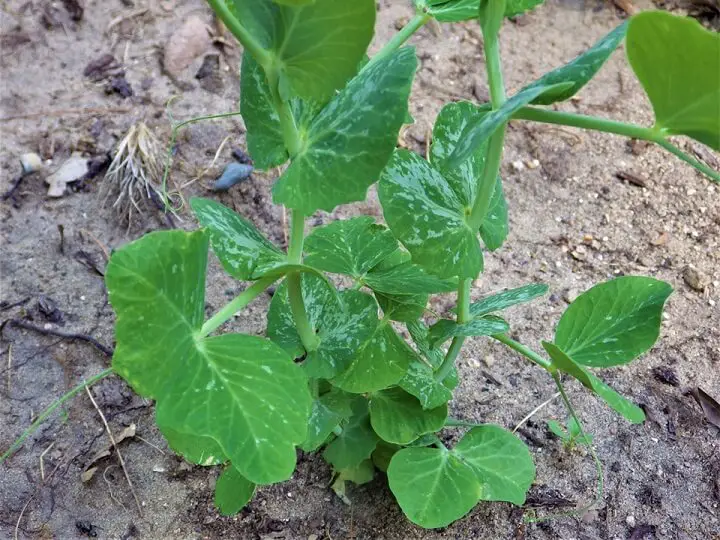
Like other leafy greens, pea greens are high in vitamins A and C. They also contain nutrients like iron, calcium, protein, and folic acid. They are very low in calories while still being filling. In Asia, they are considered gourmet fare.
6. Celery Leaves
Celery leaves contain folate, vitamin A, potassium, vitamin C, and vitamin K. They have been shown effective in the treatment of bladder disorders, kidney problems, and cystitis.
Celery seeds also assist in preventing urinary tract infections and reducing asthma symptoms. And they can provide relief from migraines ophthalmological diseases.
7. Microgreens
Microgreens are immature greens produced from the seeds of vegetables and herbs. It may seem counter-intuitive to harvest vegetables when they first emerge, especially if you’ve paid a lot for the seeds. But if you’ve harvested your own seeds from last year’s crop, you could dedicate a small space in your garden for microgreens.
They typically measure 1–3 inches high at harvest and one study found that microgreens contain up to 40 times more nutrients compared to their mature counterparts. Some of these nutrients include vitamins C, E, and K.
Specific microgreen gardening vegetables include cauliflower, broccoli, cabbage, watercress, radish, arugula, lettuce, endive, chicory, radicchio, dill, carrot, fennel, celery, garlic, onion, leek, amaranth, quinoa swiss chard, beet and spinach, melon, cucumber, and squash.
What’s obvious is just about anything (except tomatoes and potatoes) can be consumed when it’s only one to 3 inches high. Microgreens are typically eaten in salads or in soups or on sandwiches.
Early Growth Of Vegetables
Between the microgreens and mature plants, many vegetables present edible opportunities during their early growth stage. Various factors make this an easy decision if you know what to look for.
8. Zucchini Blossoms
After a zucchini blossom has been pollinated the zucchini begins to grow with the closed blossom still attached. That’s the time to harvest the blossom. Many cooks use a pastry bag to stuff the blossom with everything from cheese sauces to tomato sauces and then bake them.
9. Baby Corn
It’s hard to pick a baby ear of corn knowing that a mature ear of corn will provide so much more food, but if your corn stalks get blown over in a storm, ravaged by raccoons or appear to be stunted, that might be a good time to salvage the baby ears of corn.
You can boil them and serve with butter as a side dish or pickle them using any standard pickling recipe.
Weeds In Our Garden
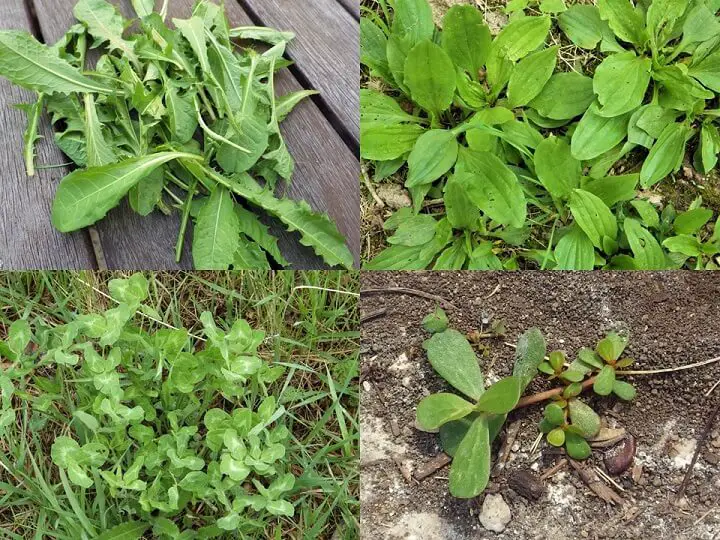
Now let's talk about weeds. They’re usually another compost heap addition, but wait a minute. Some of those weeds are not only edible but have nutrient values on a par with kale and spinach.
Here are the weeds that you should think twice about the next you’re weeding. Use them as chopped greens in a salad or give them the boiling water treatment or a quick sauté in olive oil and garlic.
11. Dandelion, Purslane, Plantain, and Clover
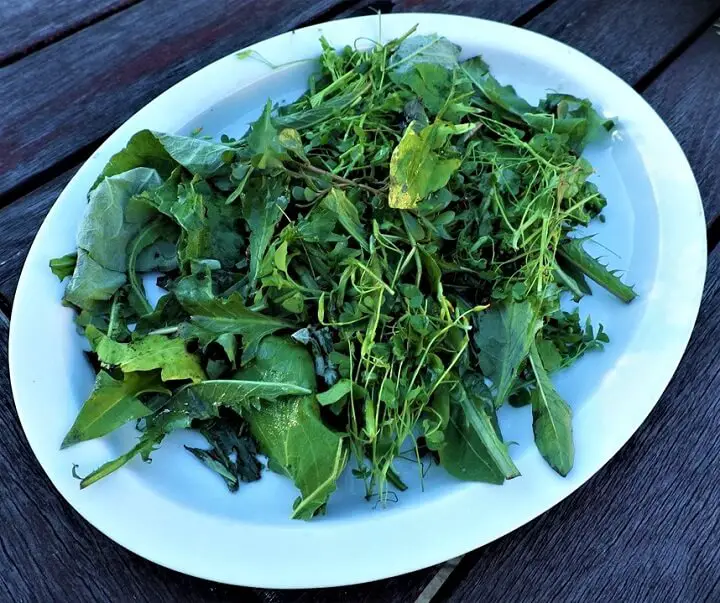
Dandelion, purslane, plantain and clover leaves contain vitamins A, C and K, vitamin E, folate, and small amounts of other B vitamins. They also contain several minerals, including iron, calcium, magnesium, and potassium.
Leaves of Mature Cruciferous Vegetables
11. Cabbage Leaves
We often peel off the outer leaves of cabbage to get to the head of cabbage. Keep those outer leaves because they’ve concentrated the nutritional value of the cabbage.
Animal studies have found that foods that contain cabbage plant compounds may have cancer-protective properties, especially against lung and esophageal cancer
12. Cauliflower Leaves
Cauliflower leaves are the grand slam home run of calcium. According to Niti Desai, a Mumbai-based nutritionist, cauliflower leaves are one of the richest sources of calcium in vegetables. A 100g serving of cauliflower leaves has approximately 600mg of calcium in it. They are also rich in iron.
Stalks and Other Stuff
13. Broccoli Stalks
Broccoli florets are great but don’t toss the stems. Slice them into thin circles and boil. A cup of the stems or stalks is packed with the same nutrients including 116% of your daily vitamin K needs, 135% of the daily vitamin C requirement, and a good amount of folate, manganese, and potassium.
Broccoli stalks as well as the florets are rich in a sulfur-containing plant compound known as glucosinolate, as well as sulforaphane, a by-product of glucosinolate. Sulforaphane is significant in that it has been shown to have a protective effect against cancer.
14. Watermelon Rind Pickles
A good source of dietary fiber but hey, these just taste really good. Here’s the recipe and, as a side note, peel off the outer, green skin of the watermelon. You just want the pithy rind for pickling. Here’s the recipe.
Ingredients:
- 8 cups sliced peeled watermelon rind (2×1-in. pieces)
- 6 cups of water
- 1 cup canning salt
- 4 cups of sugar
- 2 cups white vinegar
- 6 cinnamon sticks (3 inches), divided
- 1 teaspoon whole cloves
- 1 teaspoon whole peppercorns
Directions:
- Place rinds in a large nonreactive bowl; stir in water and salt. Refrigerate for several hours or overnight. Rinse and drain well.
- In a Dutch oven, mix sugar, vinegar, 2 cinnamon sticks, cloves, and peppercorns.
- Bring to a boil. Add rinds; return to a boil. Reduce heat; simmer, uncovered, 10 minutes or until tender. Discard cinnamon sticks.
- Carefully ladle hot mixture into four hot 1-pint jars, leaving 1/2-in. headspace. Add a remaining cinnamon stick to each jar. Remove air bubbles and adjust headspace, if necessary, by adding hot mixture.
- Wipe rims. Center lids on jars; screw on bands until fingertip tight.
- Place jars into canner with simmering water, ensuring that they are completely covered with water. Bring to a boil; process for 10 minutes. Remove jars and cool.
15. Brussels Sprouts Stalks
Some of us don’t even toss the stalks of brussels sprouts in the compost heap. Here’s what we’re missing: vitamins and minerals, including vitamin K, vitamin A, vitamin C, folate, manganese, and potassium. They also contain kaempferol, an antioxidant that may be particularly effective in preventing damage to cells.
What To Avoid (Toxic)
Say “no” to tomatoes. At least the leaves and stems. For that matter, you shouldn’t eat raw, green tomatoes either. They’re members of the Nightshade family and while a ripe tomato is safe to eat and loaded with nutrients, anything green on the plant is toxic.
Here are a few other vegetables to say no to in the garden:
- Potato leaves and stems (also members of the Nightshade family).
- Some pepper plant leaves, stems, and roots. (Some people report that some varieties have leaves that are safe to eat, but that’s like saying some mushrooms are okay).
- Speaking of mushrooms, any mushrooms that show up in the garden should simply be avoided. Maybe give ‘em a good kick.
And Then There’s That Compost Heap

Now that you’re eating most of what you grow, you’ll no doubt find there are still some leftovers that you either choose not to eat or shouldn’t, like tomato stems and leaves.
In a time of waste not want not, your compost heap is waiting for those castoffs to make next year's garden just as bountiful.
Like this post? Don't Forget to Pin It On Pinterest!



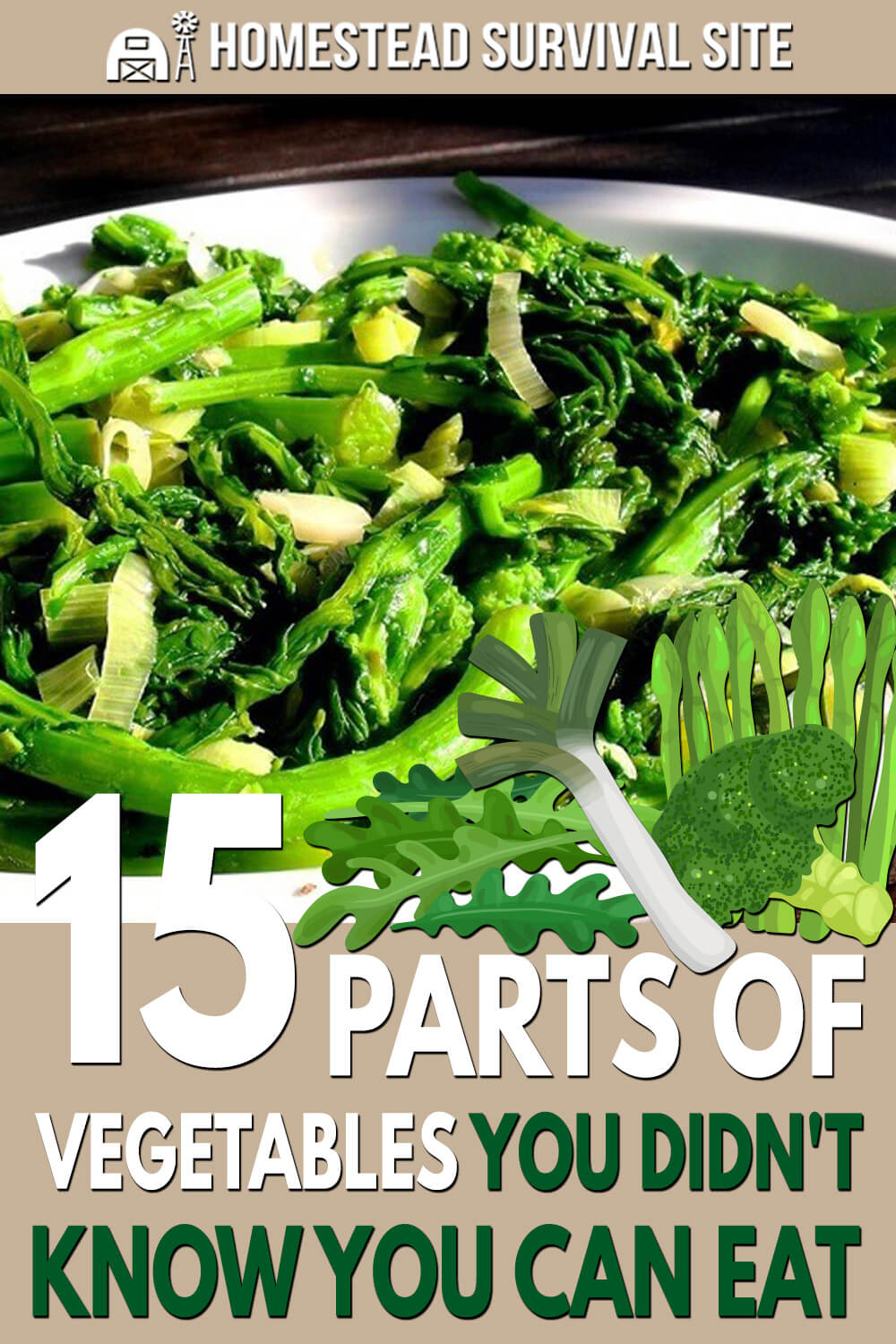









The core of the cabbage is edible. The outer part of the core should be trimmed, as it is not only tough, but can be very spicy. A little experimentation will get you to the point where the texture and heat are balanced, leaving a crisp, very tasty morsel is a great snack as you are making slaw or sauerkraut.
Just my opinion.
Here in Africa Zimbabwe tomato leaves are mixed with okra when cooking and we’ve eaten them from time immemorial and no-one has died?. With mushrooms one has to know what they are doing-we’ve also eaten mushrooms from a hewn tree stump growing on the ground part in our yard. Thank you for the above information-very eye-opening!